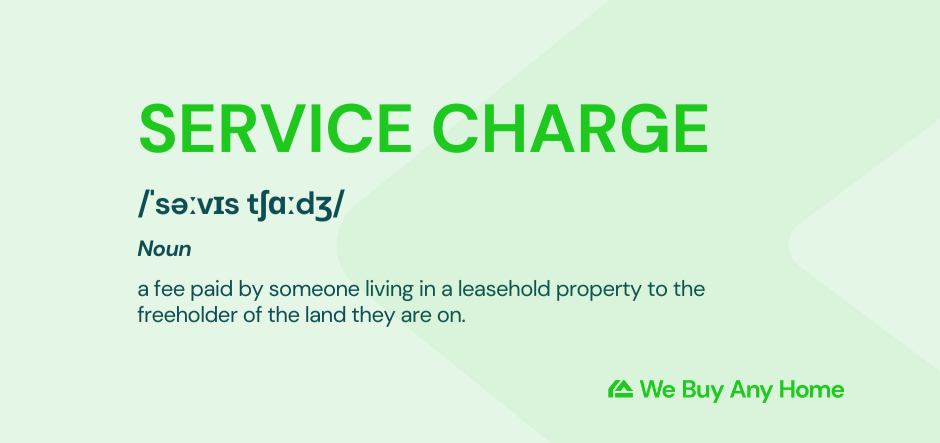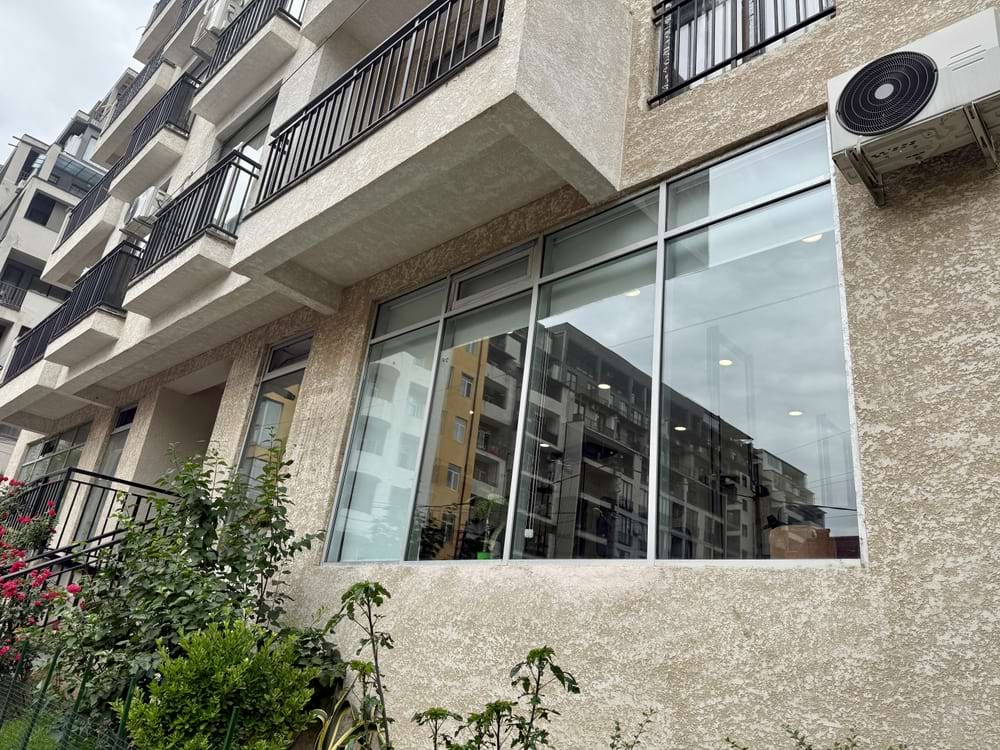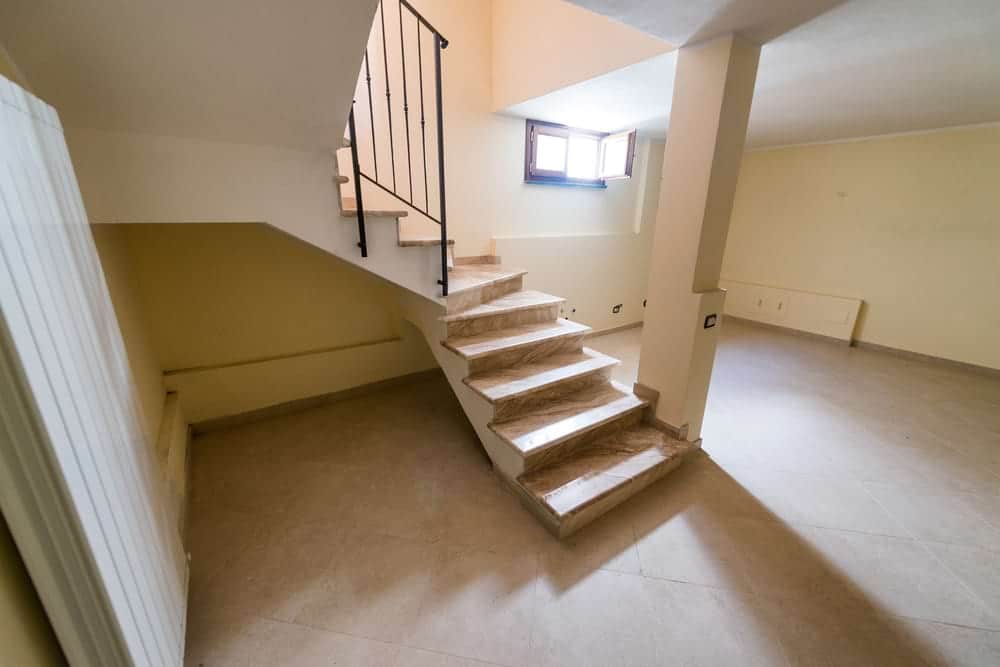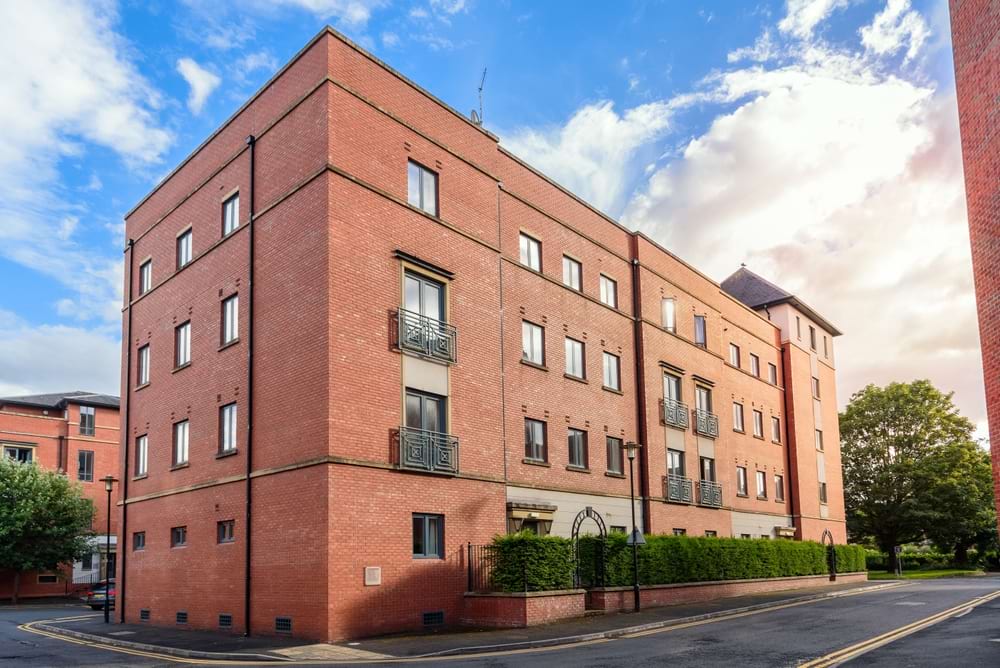Leasehold properties usually come with several ongoing costs.
One of the most common is a service charge.
Read this blog to learn what it is and how it works.
Service charge: Definition

A service charge is a fee paid by someone living in a leasehold property.
It’s stated to potential buyers before a property is bought or rented.
The money ultimately goes to the freeholder (sometimes via the landlord).
What service charges are used for
Service charges are used to pay for the maintenance of all common areas in buildings or plots of land. This could include:
- Outdoor areas (gardening, minor repairs, painting, etc.)
- Hallways (cleaning, replacing carpets, painting walls, fixing doors, etc.)
- Car parks
- Mail rooms.
And more. Longer term, they may go towards other things such as:
- Major repairs
- Security systems
- Insurance.
Sometimes, major repairs are are covered by a separate sinking fund maintained by the landlord.
Service charges vary
The average service charge in the UK is £1,500 per year. This number goes up to £2,000 in London.
You should research the typical service charge prices in your local area.
It may be worth speaking to nearby leaseholders willing to share what they pay. Estate agents could also guide you.
Remember that it’s not only impacted by your location. It’s also about the size of the development and the level of service you get.
How often do are service charges paid?
It depends. In most cases, you submit this payment once a year.
But there are instances when it can be more regular. This could be twice a year, or even monthly.
You typically pay the service charge in advance of the year ahead. You’ll then get some money back if less is spent than expected. Or you may need to pay a bit more if the cost increases.
Upfront costs for landlords
Some leases allow the landlord to incur service charge-related cost themselves up-front.
In this case, you won’t submit the payment until after the year is completed when the total is known.
Service charges for properties other than flats
There are service charges for types of property other than flats.
A service charge is usually seen for any leasehold property. This is typically flats, but it can also apply to terraced houses or semi-detached. You may even see it with a retirement property.
What is a ‘reasonable’ increase in service charge?
Many freeholders increase service charges in line with inflation.
You should thus research what this is in the United Kingdom when it happens.
For instance, inflation over the past year is 3.5% at the time of writing.
So, increasing service charges by this amount may be fair if their costs have increased.
Ask freeholder
You could directly ask your freeholder or landlord to justify their increase in service charge.
They cannot raise it unreasonably, and they must stay within the Tenant Fee Act.
How to appeal an increase in service charge
Initial contact with freeholder
Your first step is to contact the freeholder.
Put your thoughts in writing about why the change is unjust. Be polite and respectful.
Third-party organisations
Contact the ‘First-tier Tribunal’ (Property Chamber) in England if you fail to get anywhere.
This is the Leasehold Valuation Tribunal in Wales.
This involves completing a form, paying a fee, giving a copy of your lease, and explaining the details of the service charge you’re paying.
If your service charge payment is fixed, you can’t complain to the first-tier tribunal. It only applies when the amount varies.
Legal advice
It may be worth speaking to a solicitor if you’re still unhappy. They can advise on whether something can be done.
Ways to remove a service charge
Dispute it
Although, you may be able to argue the matter in court if you consider the charge ‘unreasonable’. You’ll need a strong case to prove this.
Buy a freehold
There are other ways you could attempt to remove a service charge. The most common is to buy the freehold, so there’s no longer a lease agreement.
You could do this directly by yourself, with a semi-detached or terraced property.
Share of freehold
Or you could buy a share of freehold. This involves teaming up with other people in your building to purchase the land beneath your building collectively.
You can then decide how much service charge you all need to pay. And you’re allowed to set this to zero, if you wish.




















